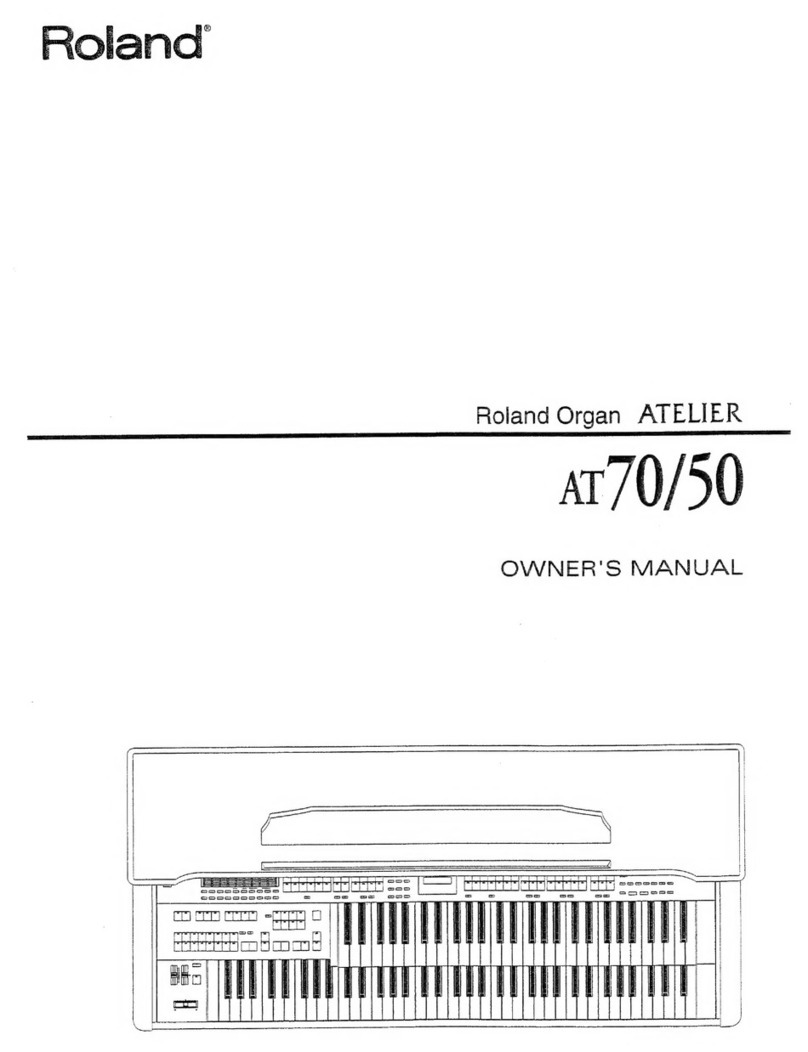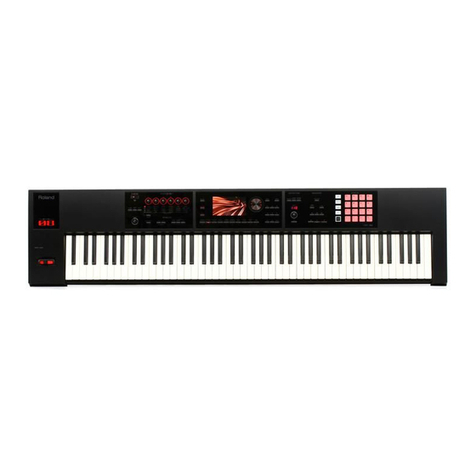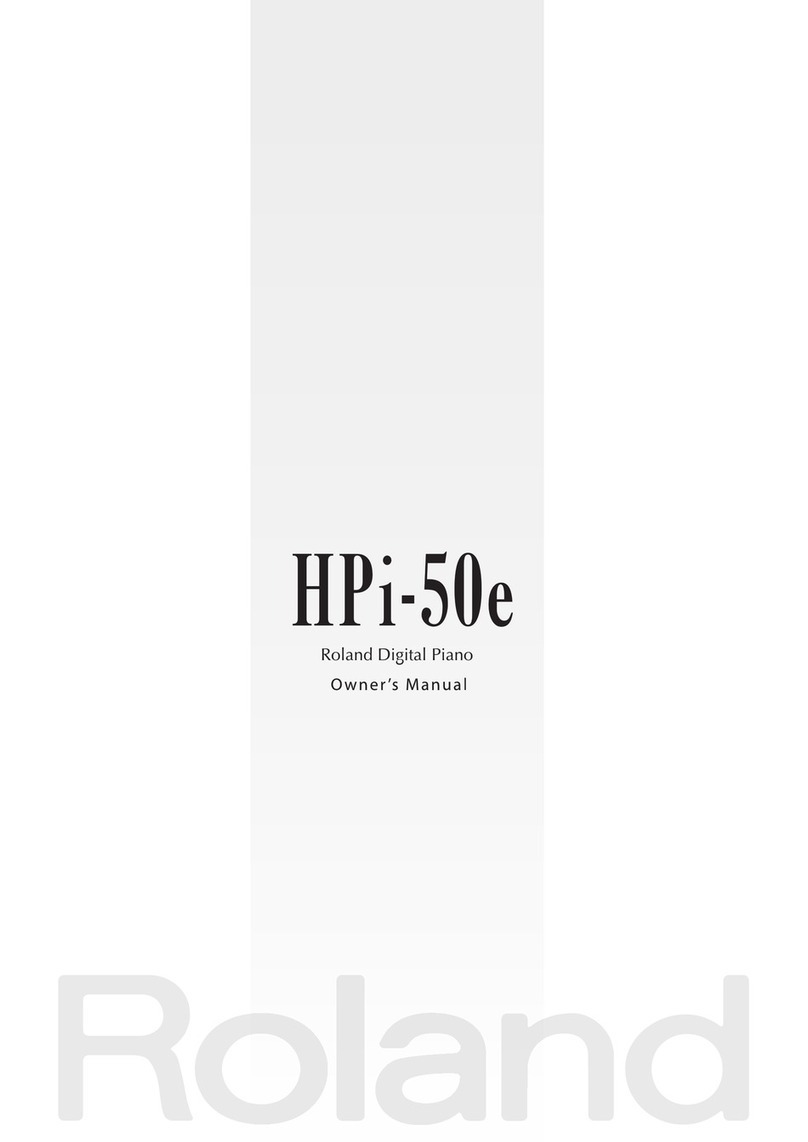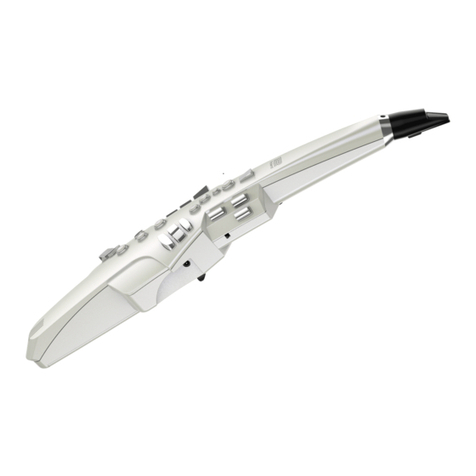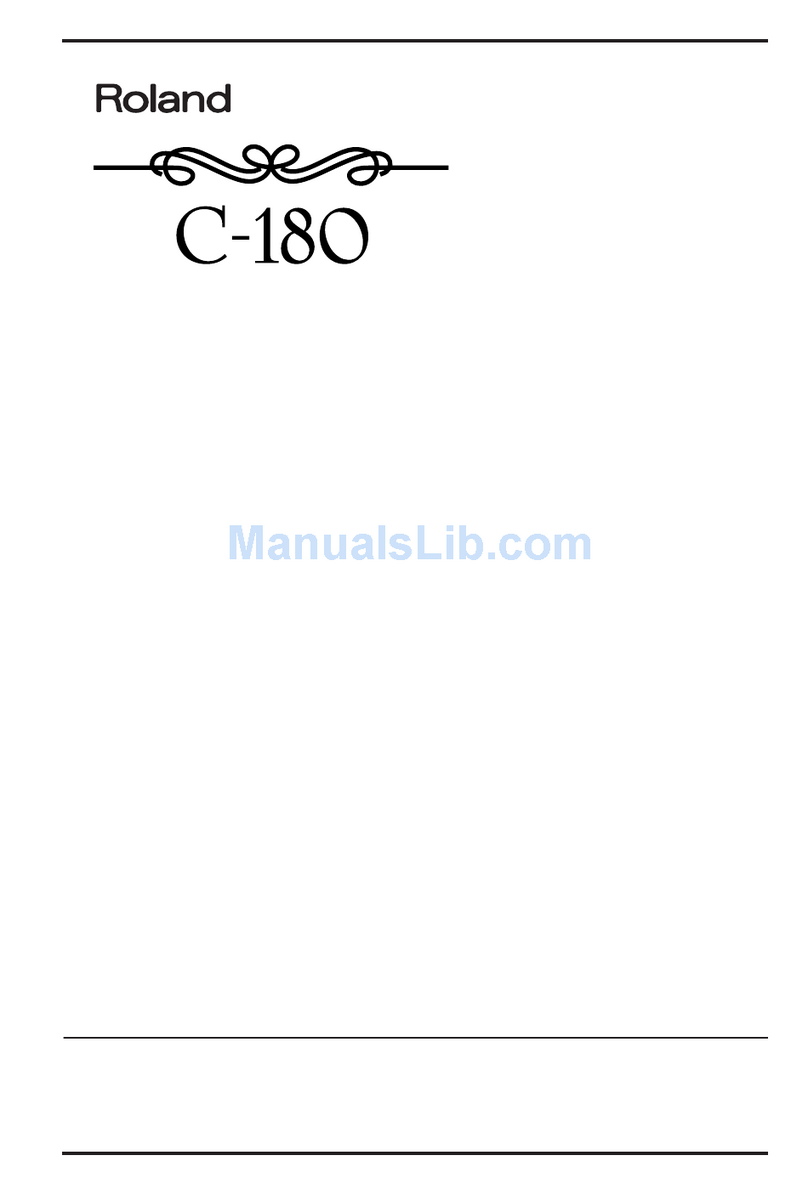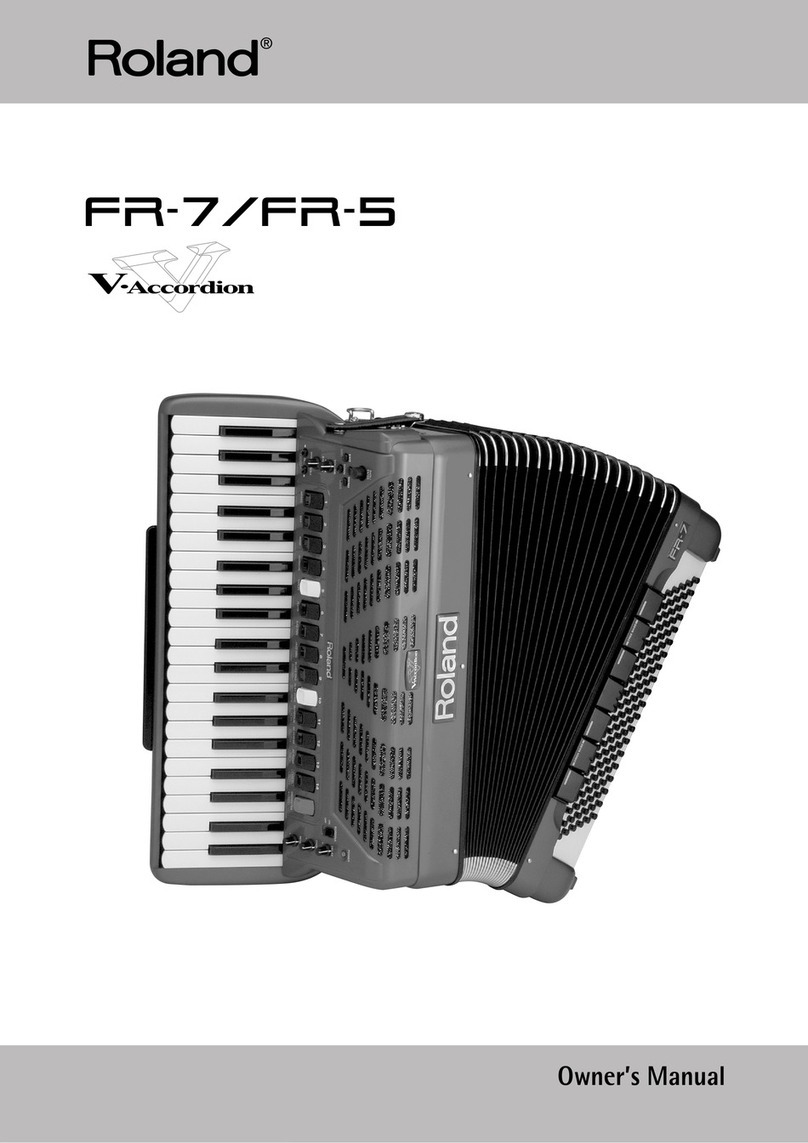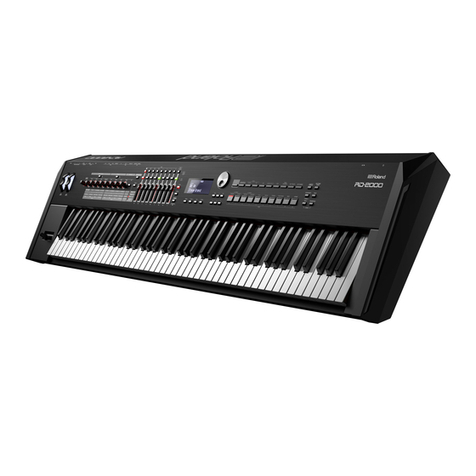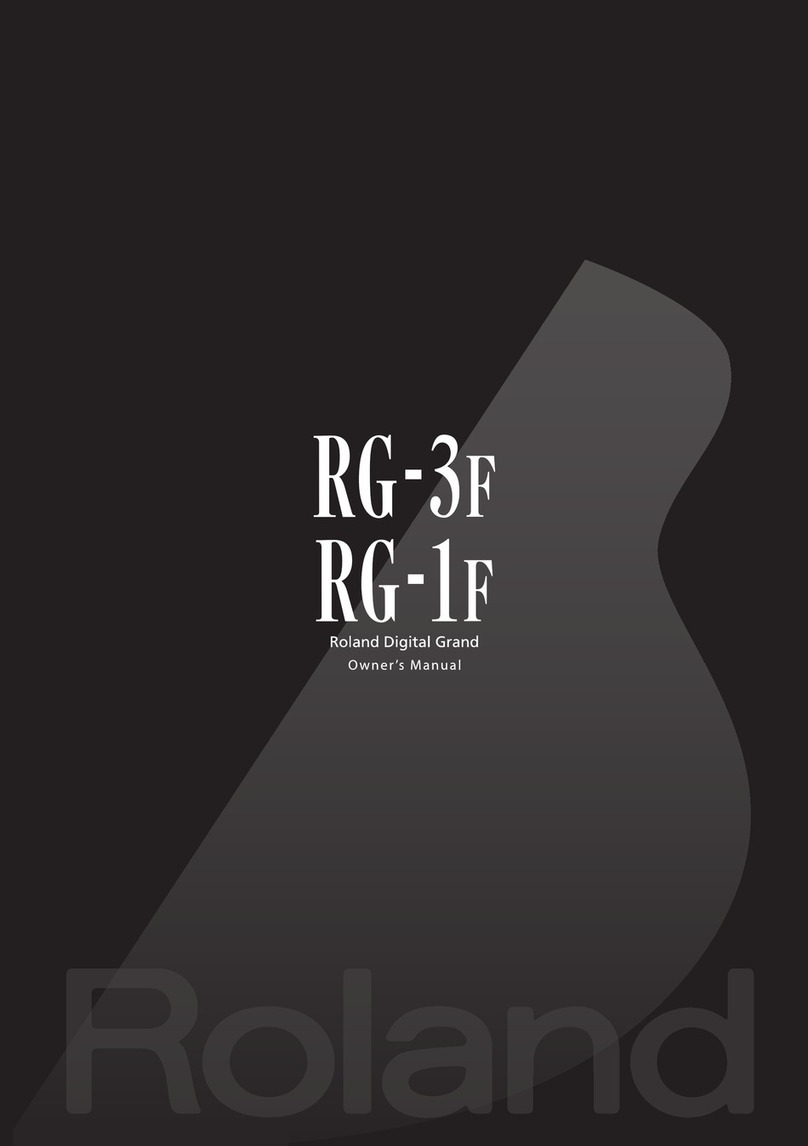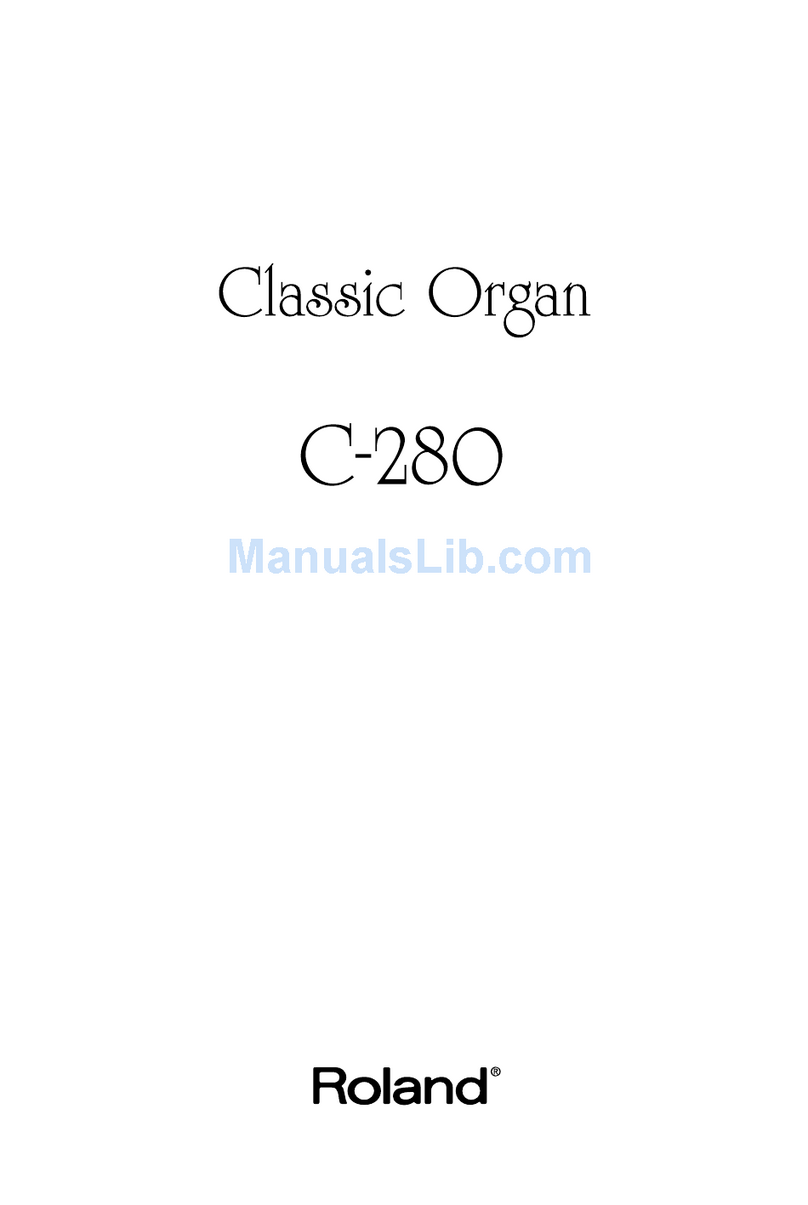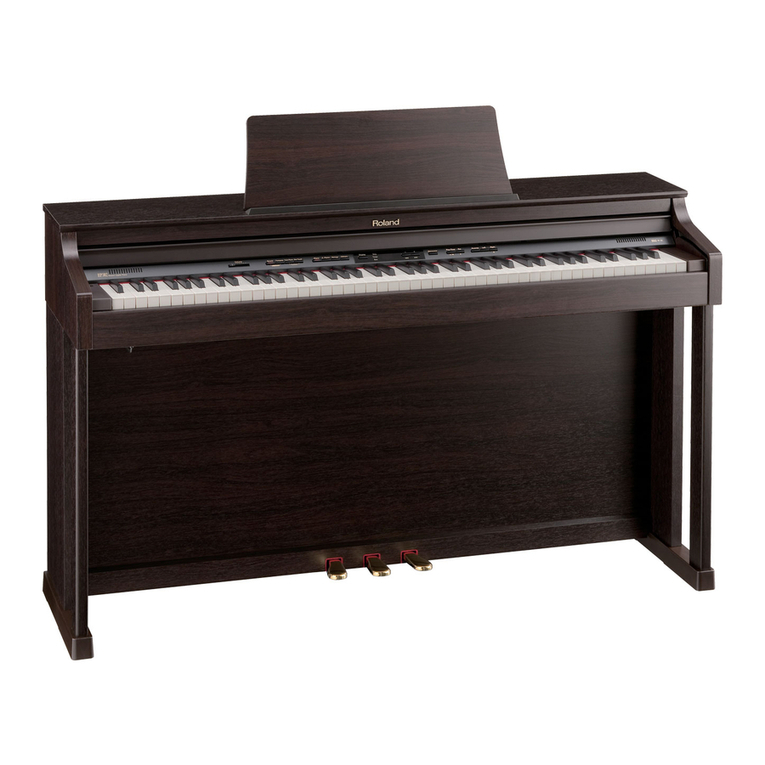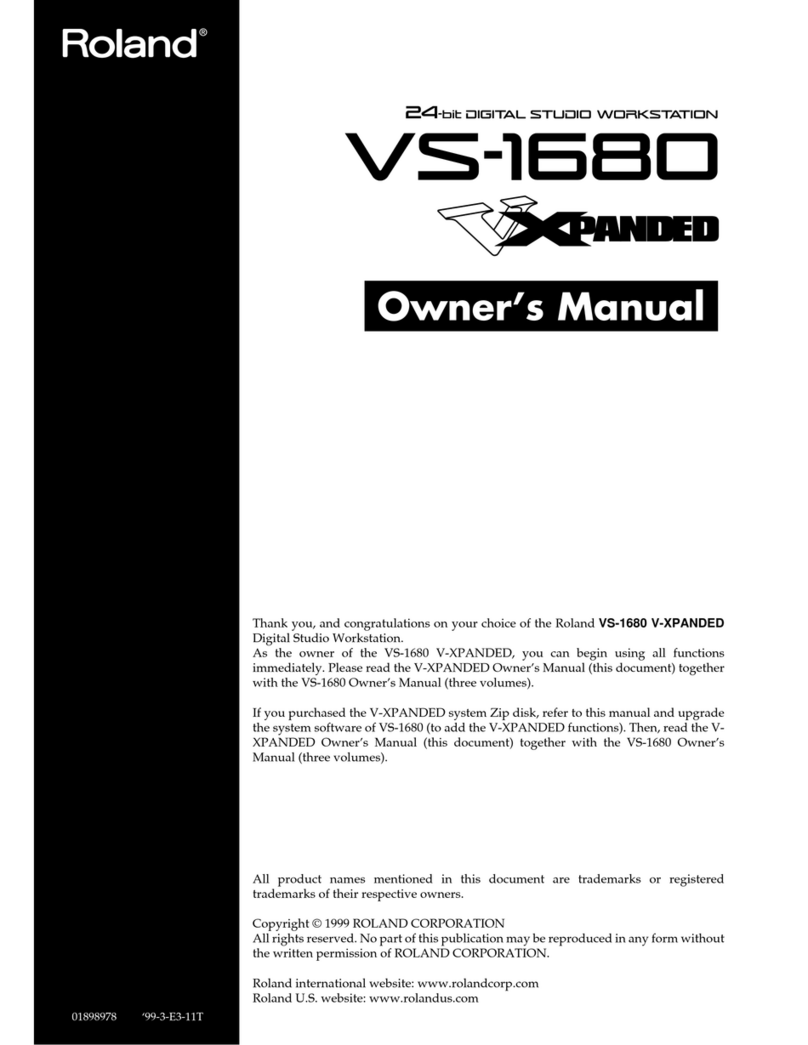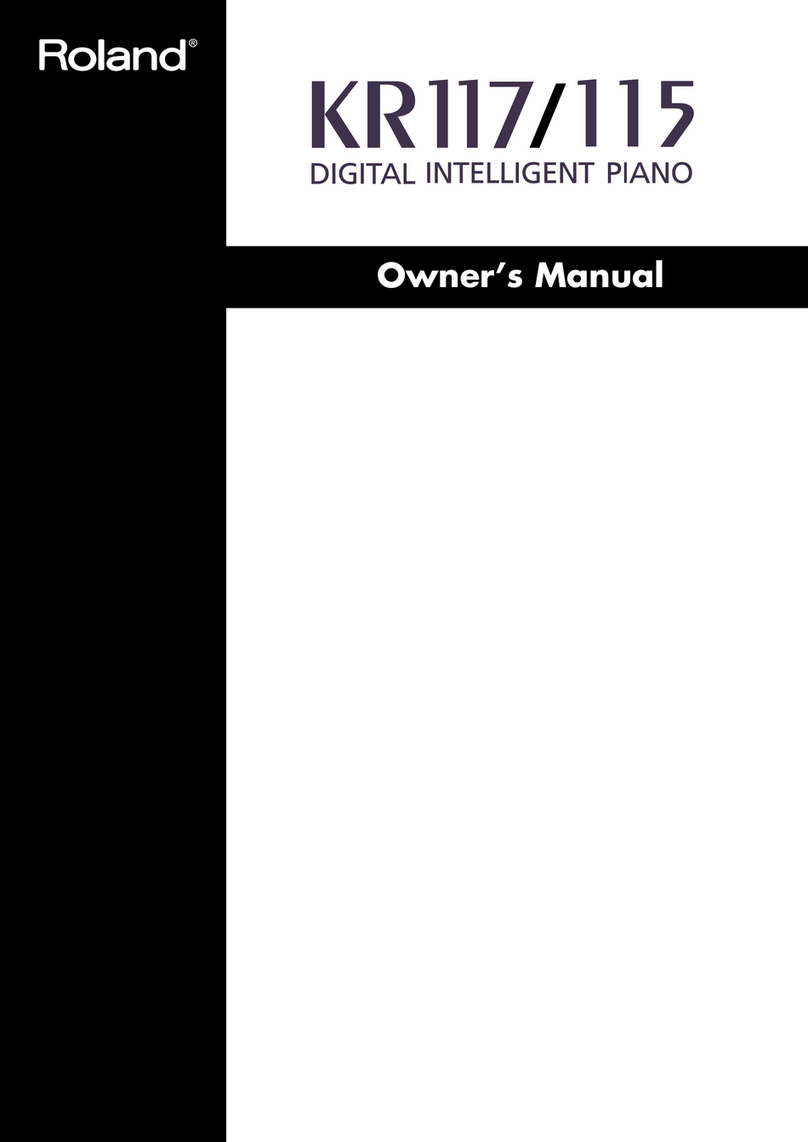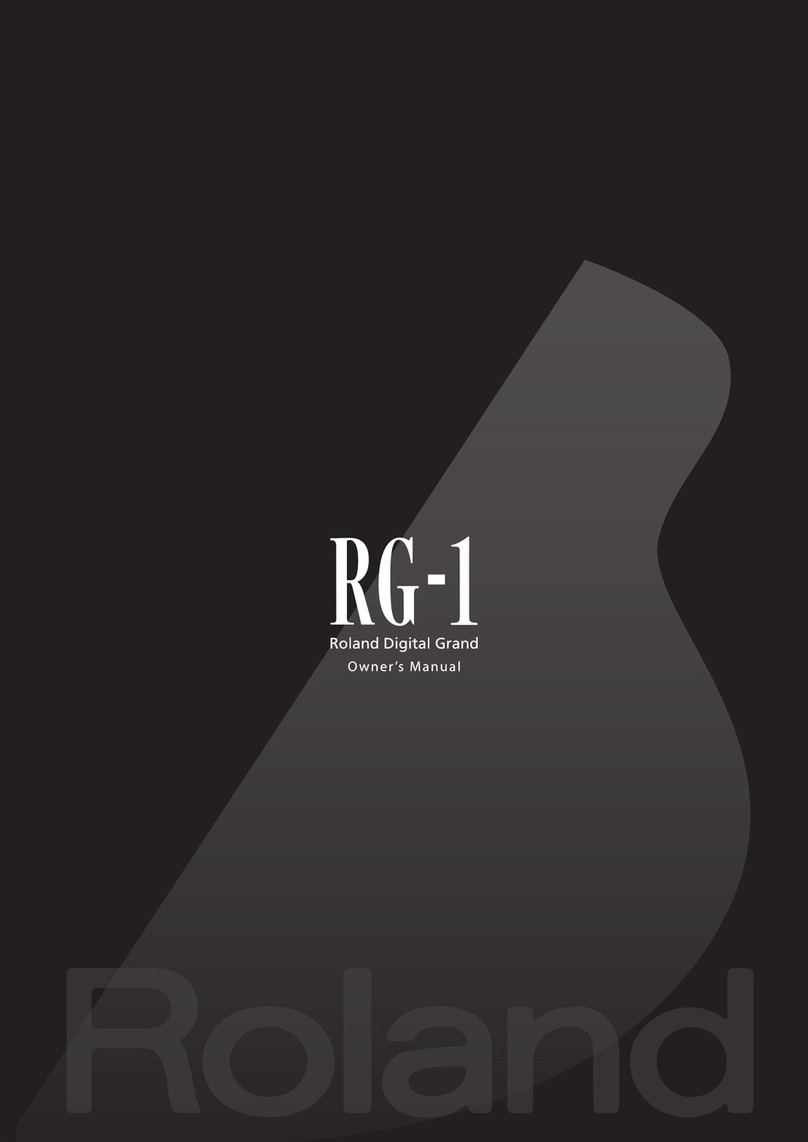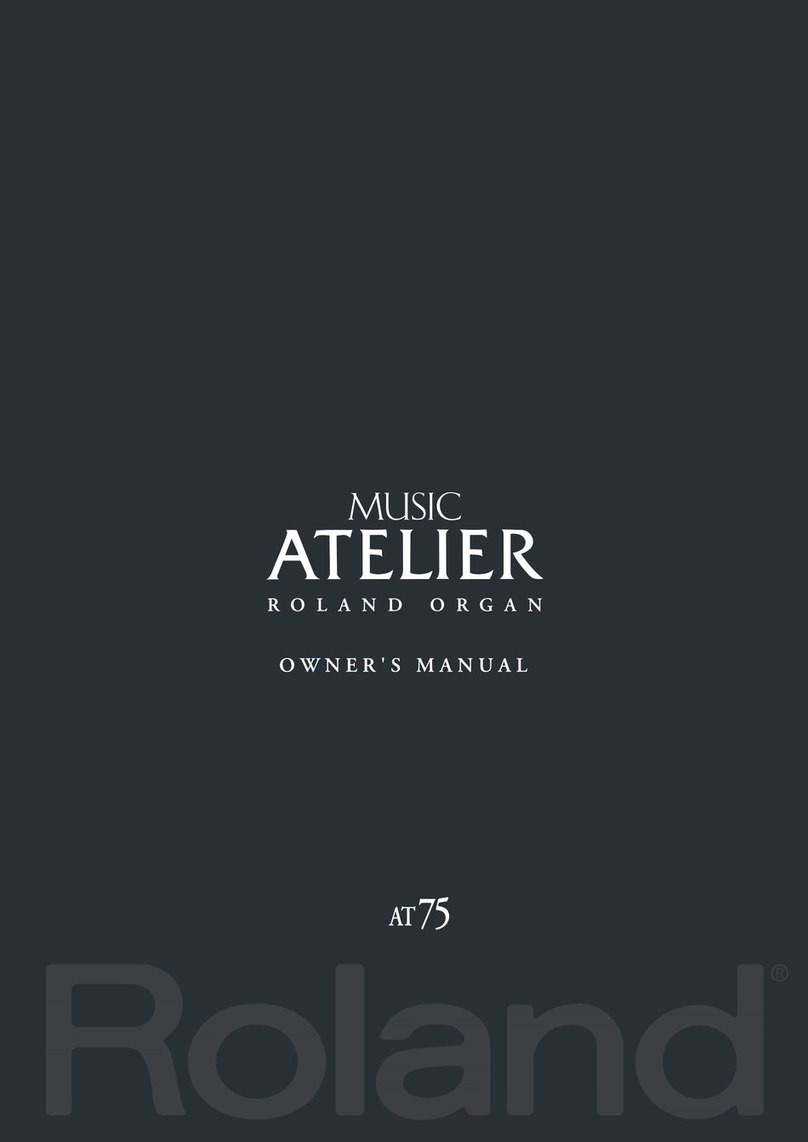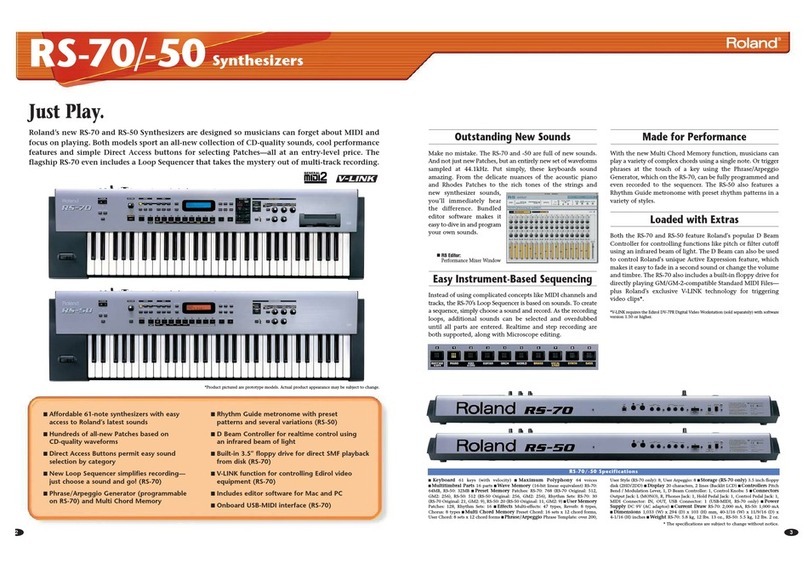
Roland
mity-150
WIGITAL
PIANO
AAU
Owner’s
Manual
Thank
you,
and
congratulations
on
your
choice
of
the
Roland
RD-150
Digital
Piano.
The
RD-150
is
a
superb
digital
stage
piano
with
24
outstanding
sounds,
64-voice
polyphony,
and
numerous
other
functions
that
will
prove
useful
to
performing
artists,
music
students,
and
teachers
alike.
To
get
the
most
out
of
the
RD-150
and
to
ensure
many
years
of
trouble-free
service,
we
urge
you
to
read
through
this
manual
thoroughly.
Note:
To
avoid
confusion,
let's
agree
to
use
the
word
“button”
for
all
keys
on
the
front
panel,
and
only
use
“key”
when
referring
to
the
RD-150’s
keyboard.
1.
Using
the
instrument
safely.................
4
2;
PIECAUBONG
iiss
ipises
tere
iaa
vente
vdaeneces
6
3.
Panel
descriptions
............0sceccceceune
7
3.1
Front
panel.......
00...
cece
eee
eee
eee
7
3.2
Rear
panel
.............
0.
0c
eee eee
eee
8
4.
Preparations
and main
functions.............
9
4.1
Connections............
0.0
cece
eee eee eee
9
4.2
Using
footswitches
and
pedals
.............
9
4.3,
Volume
and
Brilliance
................00.
10
4.4
Listening
to
the
demo
songs...............
10
4.5
Selecting
sounds
...............0
cee
eeee
11
4.6
Layering
two
Tones..............
00
e
eee
12
4,7
Splitting
the
keyboard.................065
12
4.8
Using
effects..........
00.
c
cece
cece
e
eee
13
4:9
“STranspose.
xen
Saeed
cntatnk
dareeen
wens
abs
14
4.10
Touch
sensitivity
(Key
Velocity)
...........
15
4.11
Using
the
metronome.................04-
15
5.
Using
the
Recorder
............
Lcoeedeaess
16
5.1
Recording
your
own
music
...............
16
5.2
Playing
back
your
song..............-....
16
6.
Other
useful
functions
.................085
17
6.1
Tuning
the
RD-150...........
00...
cece
eee
17
6.2
Using
other
tunings
..............0es
ee
eee
17
6.3
Setting
the
fixed
velocity
value..............
18
6.4
Pedal
functions
.........
0... cece
cence
ees
18
6.5
Saving
the
panel
settings...................
19
6.6
Restoring
the
factory
defaults
..............
19
7,
MIDI
functions..........c
sees
scene
eee
en ee
20
7.1
MIDI
transmit/receive
channels
............
20
7.2
MIDI
filters
.....
0...
eee
eee
eee
21
7.3.
Program
Change
Numbers
................
22
8.
Appendix
...........
csc
cee
ce
cere
e
een ers
23
8.1
Troubleshooting
...........
2.0...
c
eee
eee
23
8.2
Specifications.............
0...
cece
eee
eee
23
8.3
Automatic
Split
mode
settings..............
24
8.4
Automatic
Chorus
on/off
assignments.......
24
8.5
MIDI
Implementation
Chart...............
25
Copyright
©
2000
ROLAND
EUROPE.
All
rights
reserved.
No
part
of
this
publication
may
be
reproduced
in
any
form
without
the
written
permission
of
Roland
Europe
Spa.
le
aE
TRY
SS
TET
SSS
RS
ST
TD


